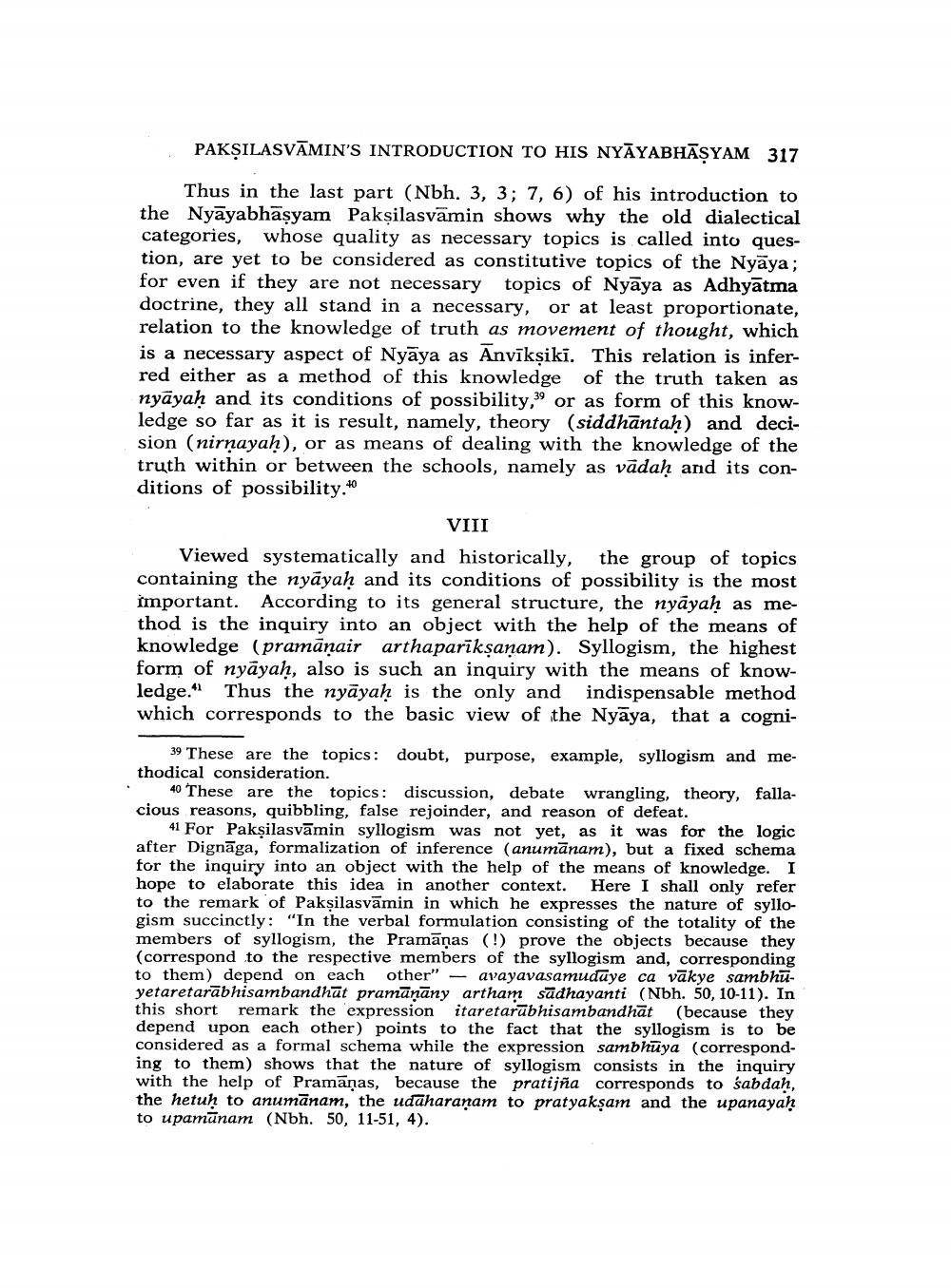________________
PAKŞILASVĀMIN'S INTRODUCTION TO HIS NYAYABHAṢYAM 317
Thus in the last part (Nbh. 3, 3; 7, 6) of his introduction to the Nyayabhäṣyam Pakṣilasvamin shows why the old dialectical categories, whose quality as necessary topics is called into question, are yet to be considered as constitutive topics of the Nyaya; for even if they are not necessary topics of Nyaya as Adhyatma doctrine, they all stand in a necessary, or at least proportionate, relation to the knowledge of truth as movement of thought, which is a necessary aspect of Nyaya as Anvīkṣiki. This relation is inferred either as a method of this knowledge of the truth taken as nyayah and its conditions of possibility," or as form of this knowledge so far as it is result, namely, theory (siddhantah) and deci sion (nirnayaḥ), or as means of dealing with the knowledge of the truth within or between the schools, namely as vadah and its conditions of possibility."
VIII
Viewed systematically and historically, the group of topics containing the nyayah and its conditions of possibility is the most important. According to its general structure, the nyayah as method is the inquiry into an object with the help of the means of knowledge (pramäṇair arthaparikṣaṇam). Syllogism, the highest form of nyayah, also is such an inquiry with the means of knowledge." Thus the nyayaḥ is the only and indispensable method which corresponds to the basic view of the Nyaya, that a cogni
39 These are the topics: doubt, purpose, example, syllogism and methodical consideration.
40 These are the topics: discussion, debate wrangling, theory, fallacious reasons, quibbling, false rejoinder, and reason of defeat.
41 For Pakṣilasvamin syllogism was not yet, as it was for the logic after Dignaga, formalization of inference (anumanam), but a fixed schema for the inquiry into an object with the help of the means of knowledge. I hope to elaborate this idea in another context. Here I shall only refer to the remark of Pakṣilasvamin in which he expresses the nature of syllogism succinctly: "In the verbal formulation consisting of the totality of the members of syllogism, the Pramaņas (!) prove the objects because they (correspond to the respective members of the syllogism and, corresponding to them) depend on each other" avayavasamudaye ca vakye sambhuyetaretarabhisambandhāt pramanany artham sadhayanti (Nbh. 50, 10-11). In this short remark the expression itaretarabhisambandhat (because they depend upon each other) points to the fact that the syllogism is to be considered as a formal schema while the expression sambhuya (corresponding to them) shows that the nature of syllogism consists in the inquiry with the help of Pramaņas, because the pratijña corresponds to sabdaḥ, the hetuḥ to anumanam, the udaharanam to pratyakşam and the upanayah to upamanam (Nbh. 50, 11-51, 4).




